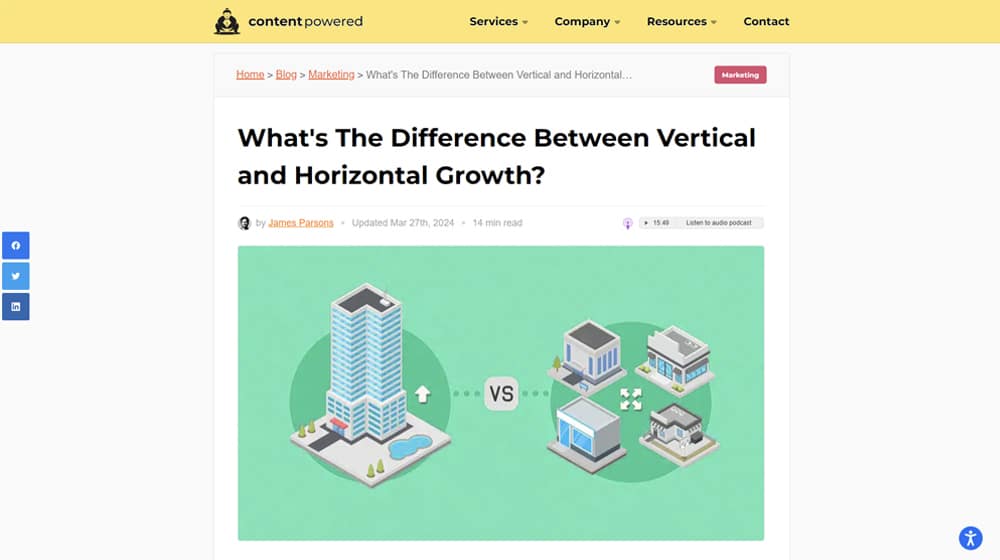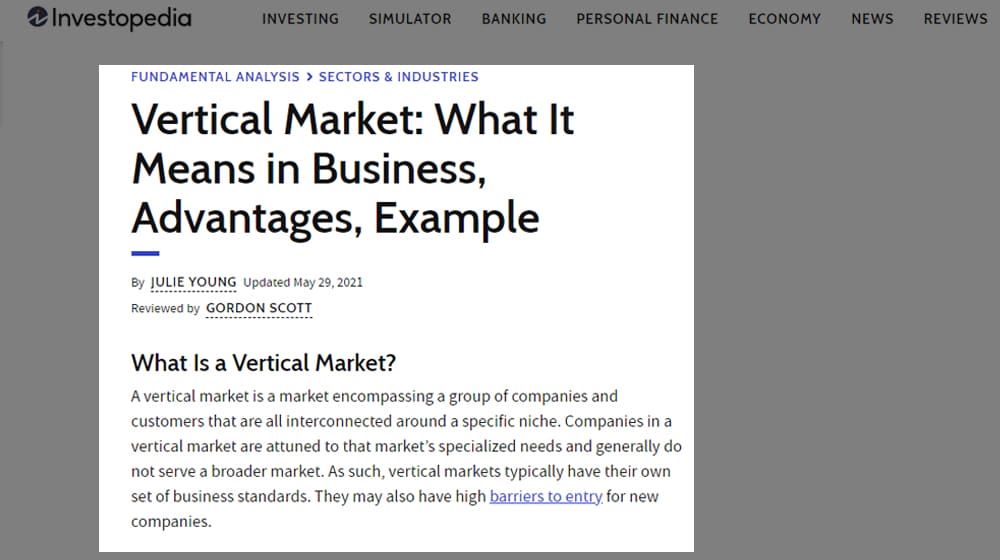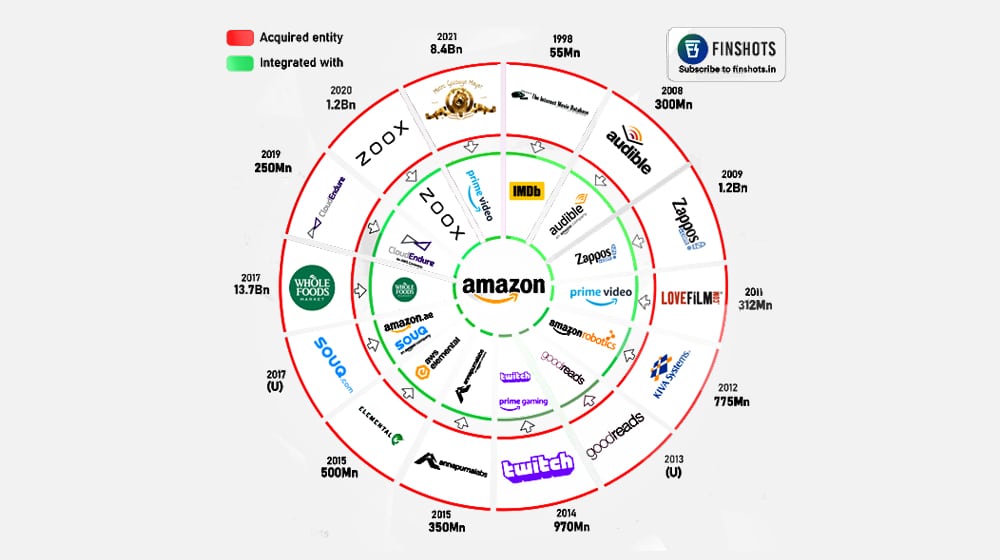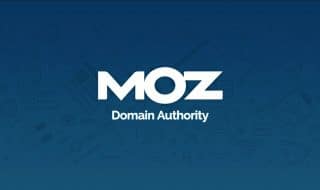What is a Vertical in Marketing? Sales, Industries, and More

Some businesses create very narrow products and don't give themselves much room to grow. Others create extremely broad products and can expand into virtually every corner of our lives. Most fall somewhere in between.
When you're defining the avenues of growth – or even planning a new business – you have to look at two different potential axes. Appropriately enough, they are the horizontal and vertical axes.
What are they, and how can you use them to define your marketing plans for the future?
Growth and Expansion in Different Directions
When a business grows, it has to grow in a particular direction. There are, technically, three different ways this growth can occur.
The first is ballooning, the Z axis on a graph, the most traditional form of growth. It's where you don't expand in any given direction or into any new markets; rather, you just keep doing what you're doing, only more.

Here's where things get a little complex. Growing along a horizontal axis means expanding into new verticals. Meanwhile, growing along a vertical axis means growing vertically. To understand this, you have to know what a vertical is in terms of marketing and sales. So, let's talk about it.
What is a Vertical?
A vertical is, broadly speaking, an industry or sector. A vertical market might be something like healthcare, automotive, or financial services. It's basically just one context for a product rather than multiple different contexts for a product.

A vertically-oriented product is one that is tailor-made for a specific vertical and has relatively little use outside of that vertical.
- An EKG machine has use primarily within a hospital and healthcare settings, and isn't useful outside of it.
- Baby-sized diapers are narrow in the vertical of childcare and don't see much use outside of it.
- Epic, the EHR (Electronic Health Records system), is extremely useful throughout the healthcare industry, but doesn't have a use outside of it.
Verticals can be relatively narrow or as broad as "all of finances" or "all of automotive," so it can be very generic as well.
Compare all of this to a product that is aimed at being horizontal.
- Printers and paper. Name me an industry that hasn't used a printer in the last 5 years.
- Productivity suites. MS Office and Google Workspace are used in hundreds of different industries and sectors.
- Accounting software. Basically, every business over a certain size needs to have some kind of accounting.
A business expanding along the horizontal axis means stepping into new verticals, such as when Google made Workspace for Government, or Workspace for Nonprofits, or Workspace for Education. A business growing within their vertical means expanding either to more uses within that vertical, or pushing for more adoption within that vertical.
Let's take a recent business as an example: Tesla.
Tesla got its start developing an electric car, so they chose their starting point as the midpoint of consumer luxury in a horizontal sense and the consumer vehicle in a vertical sense.
Over time, they've grown in the traditional "ballooning" Z-axis sense by getting more popular. They've also grown in the vertical sense by offering other related vehicles, like the Model X as an SUV-style vehicle or the Cybertruck as an attempt to step into the truck market. They've also grown horizontally by stepping into new verticals, like using their battery technology in conjunction with household solar in their power banks.
Vertical markets aren't always narrow, though they can be. After all, all of government, all of healthcare, all of retail, all of financial services; these are extremely broad categories. A single company can thrive within a single vertical for decades before they reach saturation.
The Pros and Cons of Vertical Marketing
Marketing can be done along all three axes. Marketing along the Z-axis is simply increasing ad budgets to get more people in your existing demographic to make purchases, growing and scaling your company. Growing on a horizontal axis means picking up new markets and expanding into new territory.
Compared to these two, growing within a vertical axis might not seem as enticing. After all, which seems better: putting out a new feature for an existing product to make it slightly more attractive to your core demographic, or putting out a reskinned version of your product to attract an entirely new industry?
The drawbacks to vertical marketing – that is, focusing on a single vertical – generally fall to two things: competition and expansion.

To cover the second one first, consider that when you're within a vertical, there's not always a lot of room to grow. A lot of products within a given vertical are very narrowly designed. They serve a single purpose or a small selection of related purposes and not much beyond that. A healthcare service like an EHR can work for hospitals, urgent cares, dental offices, and even vets, but there's no real room for it to expand beyond those boundaries. An automotive lift is useful for lifting cars, but it's not like you can slap it into a building and call it an elevator.
The issue of competition can be thorny as well. Within a vertical, you generally have other competitors who are also within that vertical. Since it's constrained, there's not actually a lot of room to go broad to out-compete the competition. People are more likely to directly compare your features and services and can make a more direct judgment of which is better along factors like depth of complexity, uptime, price, and other metrics they care about.
Moreover, since the vertical can be a constraint, if you try to roll in a new feature, either it's worthless to your demographic and doesn't help you win the fight, or your competitors simply implement the same thing, and you're back where you started.
The benefits of vertical marketing, on the other hand, can be high but are harder to recognize.
- You're tightly focused on a given audience. That means you can be very responsive to their thoughts and concerns and can adapt to their needs more easily. Google can't exactly make a change to Workspace to cater to nonprofits if it gets in the way of all of their other business and consumer customers, right? That's why they've spun off different products from the same core system.
- It's a quality-over-quantity situation. You can become more tightly integrated with your industry, making yourself indispensable, and can even make it difficult for competition to exist. Others will have to find ways around you, and you can be the proverbial 800-lb gorilla in the enclosure.
- You have the potential to reach a saturation point where you essentially have a captive audience and can choose to rest on your laurels or put the pressure on by raising prices, and there's not a lot they can do about it. This is, however, very dangerous, as that's the prime incentive for a startup to undercut you and steal market share.
There's also the potential to take over a vertical through acquisitions. You can see this in a lot of local areas around the country with telecoms. Often, in given neighborhoods or even entire cities, there is very little competition for ISPs. Your choices are the one high-speed provider, the one DSL provider, maybe a reseller for one of those, and maybe something like Starlink. On a national level, there's competition, so the government doesn't step in and slam them for anticompetitive practices. However, in the narrow view, it's dire.
The risk is, of course, exactly that: if you buy up your competition, eventually you can reach a point where the government says no, another merger makes an illegal monopoly and stops you. At that point, the strategy ceases to function.
The Pros and Cons of Expanding Horizontally
Expanding horizontally means stepping into new verticals, so it's still relevant to any discussion of verticals in marketing.
The benefits of new verticals are clear: it's an entirely new industry with new customers, new adventures, new contracts, and most importantly, a lot of potential money to be made. It's often one of the most exciting steps a business can take.
It's also very risky.
In order to step into a new vertical, you need to have a very good idea of what goes on within that industry and what purpose you can serve by stepping in. Tesla knew their battery technology would be useful for anywhere that could use a large battery, and given that the state of solar power was often a bunch of chained-together old car batteries, there was definitely room for it. On the other hand, there are always examples of attempts to expand into a new market that go terribly wrong.

Even if you establish a foothold in another market, you start to lose some of what made you special in the first place. If John Deere made a sports car, would you trust it? If Nvidia decided to step outside of the technology space and start selling bread, would their brand benefit? Extreme examples, sure, but it's the kind of risk you can take diluting your brand's emphasis.
Obviously, the biggest immediate risk is failure. You invest a lot of time and money into expanding, and if that expansion doesn't work, that's a significant loss.
I want to be clear here that I'm not saying an expansion into new verticals is bad in any way. I've done it. It's frequently beneficial to the brands, and it's how, for example, Amazon went from a bookstore to a place you can go to buy almost literally anything. Of course, Amazon is a great example of both sides of the coin. Who remembers their attempt to make a phone?
Vertical and horizontal markets also exist in other senses as well. An employee considering leaving their current company, for example, could consider a move within the same vertical (with the hopes of a higher salary, more upskilling, or a better position), or they might use their skills to transfer to another vertical for newer experiences and different growth opportunities.
What Method of Growth is Right for You?
Understanding verticals and how they work, as well as the three types of growth, is a good way to figure out what stage of business you're in and how you should proceed.
Z-axis or stationary growth is ideal if you're small but ferocious in your space. You have room to expand and scale without needing to expand into new industries or develop new services or features. This is often the way startups and small businesses grow, and it can be slow and steady progress for years. The key is to build stability so that if you want to expand in other directions later, you're insulated from the impact of failure.
Expanding vertically is generally the next step for mid-sized businesses. A company like Uber releases UberX. Tesla expands their consumer vehicle offerings. A company like Epic makes a vet-focused EHR. Expanding within a vertical is easier and lower risk because you already know the industry quite well, you already have connections and customers, and you may even have direct feedback and requests from related customers who would love an expansion of your product or a similar offering in the same space.

Expanding into new verticals, then, often falls to the larger companies when they've reached a point of diminishing returns within their core vertical. You need a change-up, or you need an investment in a new industry that can fuel rapid growth and returns where more growth in your existing vertical is too slow.
Stepping into new verticals isn't always necessary! There are plenty of good, large brands that could expand but don't need to. John Deere could certainly make a passenger vehicle, but why would they? Their brand is focused on agricultural vehicles, from residential lawn mowers to industrial combines, and they have plenty of room.
Truthfully, dividing all of these into business stages isn't quite accurate either. There are often companies that make a product that is generically useful, and expand horizontally far more than they expand vertically. Even my content marketing services expand horizontally to other industries before they expand vertically into different kinds of content.
It all comes back to your goals, the kind of products you make and sell, and the easiest avenues for growth.










Comments